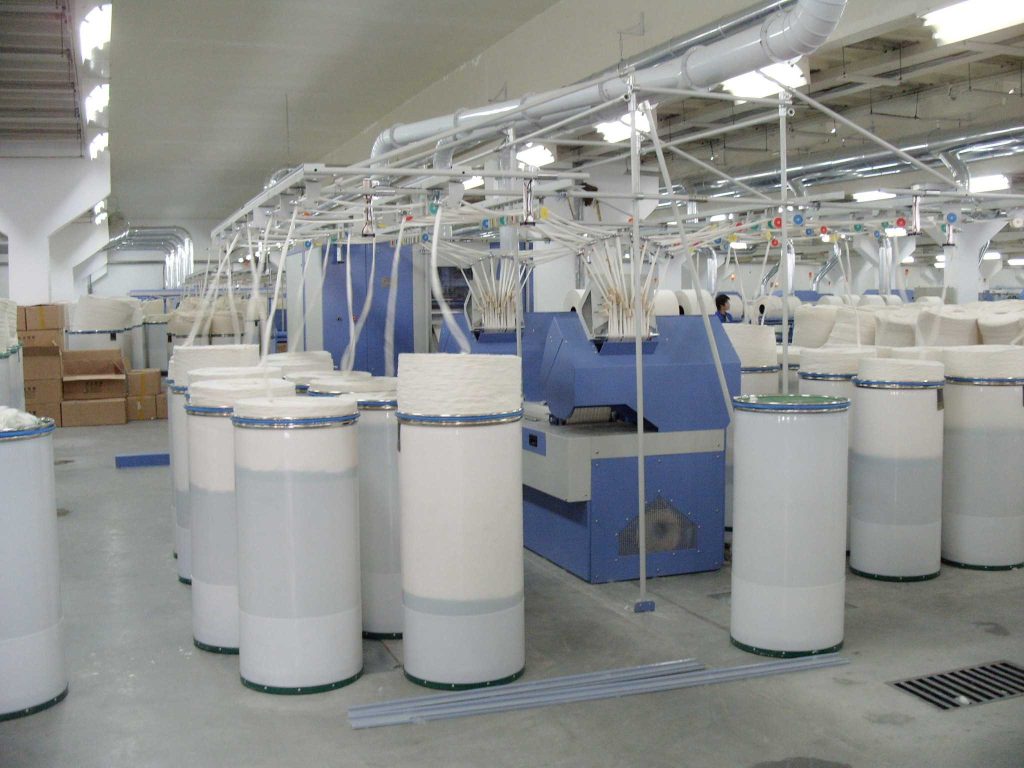In the textile industry, the efficient handling and processing of fibers are crucial to maintaining productivity and quality. The sliver can is one important part of this procedure. Sliver cans play a vital role in the preliminary stages of yarn production, ensuring that fibers are stored and transported without tangling or damage.
This article aims to provide a comprehensive guide on calculating the optimal number of sliver cans required for a textile mill, balancing production needs with storage and handling capacities.
Factors Influencing the Number of Sliver Cans Needed
The quantity of sliver cans used by a textile mill depends on a variety of parameters, including:
The mill’s production capacity
The amount of sliver cans required is directly influenced by the mill’s manufacturing capacity. This includes daily, weekly, and monthly production targets, which help estimate the volume of sliver produced over a given period.
Types of Fibers Being Processed
Different fibers have varying bulk densities and processing characteristics. For instance, cotton slivers may require different storage capacities compared to wool or synthetic fibers.
Machinery Used
The types of spinning frames and other machinery in use also affect sliver can requirements. Different machines may have specific sliver sizes and capacity needs.
Workflow and Process Efficiency
The efficiency of the production process, including the number of processing stages and the length of production runs, impacts the number of sliver cans needed. Efficient workflows can reduce the need for excessive sliver can inventory.
Storage and Handling Capacity
The available storage space in the mill and the ease of handling sliver cans must be considered. Ensuring that there is enough room to store filled sliver cans without disrupting the production process is crucial.
Calculating Production Needs
To calculate the number of sliver cans required, it’s essential to estimate the amount of sliver produced per hour and determine the capacity of individual sliver cans.
Estimating Sliver Production
The amount of sliver produced per hour can be estimated based on the production rate of the machinery. For example, if a carding machine produces 100 kg of sliver per hour, this figure can be used to estimate daily production.
Determining Sliver Can Capacity
Sliver can capacity is typically measured in volume (liters) or weight (kilograms). Standard sliver cans come in various sizes, and their capacity can be matched with the production estimates.
Example Calculation
If a mill produces 800 kg of sliver per day and each sliver can holds 40 kg of sliver, the number of sliver cans needed per day would be:
Number of sliver cans per day = Daily Production/Sliver Can Capacity = 40kg (per can)/ 800kg = 20 cans
Balancing Production and Storage
Ensuring a balance between sliver production and spinning capacity is crucial for smooth operations. This involves aligning sliver production rates with the capacity of spinning frames and ensuring seamless transitions between different production stages.
Calculating Total Sliver Can Requirement
The total sliver can requirement includes considering buffer and peak production periods. A formula for calculating the total requirement might look like this:
Total sliver cans=(Daily production requirement+Buffer stock)×Peak production factor
For instance, if the mill needs 20 cans per day with a buffer of 5 cans and a peak production factor of 1.2, the total requirement would be:
Total sliver cans=(20+5)×1.2=30 cans
Practical Considerations
Spare Sliver Cans
Having extra sliver cans on hand is crucial for cleaning and maintenance. This guarantees that when a few sliver cans go out of service, the production process won’t be halted.
Rotation and Usage Patterns
Implementing a rotation system for sliver cans can help maintain their condition and extend their lifespan. Routine upkeep and inspection are required to guarantee peak performance.
Inventory Management
Using inventory management and tracking systems can streamline the handling of sliver cans. This lowers the possibility of overstocking or running out of sliver cans and improves forecasting.
Case Study: Real-Life Example
A textile mill producing 600 kg of cotton sliver daily requires an optimal number of sliver cans. The standard sliver can capacity is 30 kg. The calculation steps are as follows:
1. Daily Sliver Can Requirement:
30kg per can/600kg=20cans/day
2. Including Buffer Stock:
A buffer of 5 cans is added to account for any disruptions or maintenance: 20+5=25 cans
3. Considering Peak Production:
With a peak production factor of 1.1:
25×1.1=27.5≈28 cans
Therefore, the mill needs approximately 28 sliver cans to maintain efficient production.
Conclusion
Calculating the number of sliver cans required for a textile mill involves understanding various factors such as production capacity, fiber types, machinery, and workflow efficiency. By using data-driven methods and regular assessments, textile mills can optimize their sliver can inventory, ensuring smooth operations and maintaining high productivity levels.
Regularly reviewing and adjusting the number of sliver cans can lead to significant improvements in efficiency and cost-effectiveness, ultimately contributing to the mill’s overall success.

